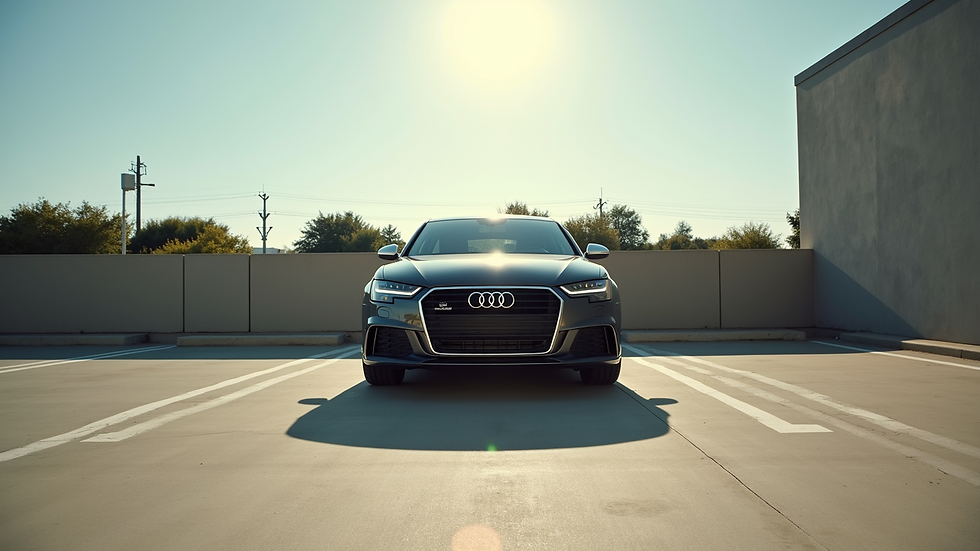Used vs New Cars Pros and Cons: Making the Right Choice for Your 2025 Purchase
- Sunny

- Jul 29
- 4 min read
Deciding between purchasing a used car or a new one can be a challenging decision, especially with the evolving automotive industry in 2025. As technology advances and economic factors fluctuate, potential car buyers must weigh their options carefully. This blog will explore the pros and cons of both used and new cars, providing helpful insights to make the best decision for your needs.
Understanding Your Budget
When considering whether to buy a new or used car, your budget is likely the most significant factor.
New cars typically come with a higher price tag, reflecting their latest technology, features, and warranties.
In contrast, used cars can often be significantly less expensive, allowing buyers to save money or allocate resources toward additional features or upgrades.
Budgeting is crucial in this decision, as understanding the total cost of ownership, including insurance, taxes, and potential maintenance, can influence your choice.
The Value of Depreciation
One key consideration when debating used vs. new cars is the concept of depreciation.
New cars begin to lose value the moment they leave the dealership. In fact, a new vehicle can depreciate by as much as 20% in the first year alone.
This factor means that purchasing a new car may lead to higher costs over time compared to a used vehicle, which has already experienced much of its depreciation.
When buying used, buyers often get more value for their money, as they can access vehicles that are only a few years old at a significantly reduced price.
Features and Technology
When comparing new vs. used cars, the level of technology and features plays a significant role in the decision-making process.
New cars come equipped with the latest safety features, connectivity options, fuel efficiency technologies, and infotainment systems.
On the other hand, while you may miss out on the latest advancements with a used vehicle, many used cars from recent model years still offer a wealth of modern conveniences and safety features.
However, buyers must carefully research the specific models they're considering and evaluate what features are most important to their driving experience.

Reliability and Warranty
Reliability is another vital aspect to consider when choosing between used and new cars.
New cars typically come with a comprehensive manufacturer’s warranty, providing peace of mind should any issues arise within the warranty period.
Conversely, used cars may have limited or no warranty left. However, some dealerships offer certified pre-owned programs that provide warranties on used vehicles, ensuring they meet specific quality standards.
It's essential for buyers to research the historical reliability of the make and model they are interested in and consider factors like potential repair costs.
Insurance Costs
Insurance rates can vary significantly between new and used cars.
New cars generally have higher insurance rates due to their greater value and, in some cases, more expensive parts.
Used cars, especially older models, can often have lower insurance premiums.
Therefore, potential buyers should obtain quotes for insurance on both new and used vehicles to determine how this cost fits into their overall budget.
Financing Options
Financing options also differ widely between new and used cars.
Car manufacturers and dealerships often provide attractive financing incentives for new cars, including low-interest rates or cash-back deals.
On the contrary, used cars may come with higher interest rates due to their age and financing options may be limited based on the vehicle’s value.
It's advisable for buyers to evaluate their financing options including loans, credit scores, and what financial resources are available to them.

Availability and Choice
When considering used vs. new cars, availability can impact your decision significantly.
New cars are generally limited to specific models available at local dealerships, which may restrict your options.
Used cars offer a wider range of choices, allowing buyers to find a vehicle that fits their preferences and budget without being tied to current production lines.
Online platforms and local dealerships provide various options for used cars, making it easier for buyers to locate specific models and negotiate prices.
Environmental Considerations
For eco-conscious buyers, the environmental impact of purchasing a vehicle is worth exploring.
New cars may have better fuel efficiency and lower emissions, meeting the latest environmental regulations.
However, buying a used vehicle extends the life of an existing car, potentially reducing waste and the environmental cost of manufacturing a new vehicle.
Considering eco-impact is an important factor, so it's worthwhile to research how different models and their fuel economies stack up.
Conclusion
In summary, the choice between a used and a new car in 2025 presents various factors to consider, from budget constraints to desired features, reliability, and environmental impact.
By evaluating and understanding the pros and cons of each option, buyers can make an informed decision that best suits their needs and preferences.
Whether you choose to invest in a new vehicle with the latest technology or save money with a reliable used car, the goal is to find a solution that meets your lifestyle and financial situation for years to come.
Remember to conduct thorough research and consider all your options before making a final decision. Happy car hunting!






Comments